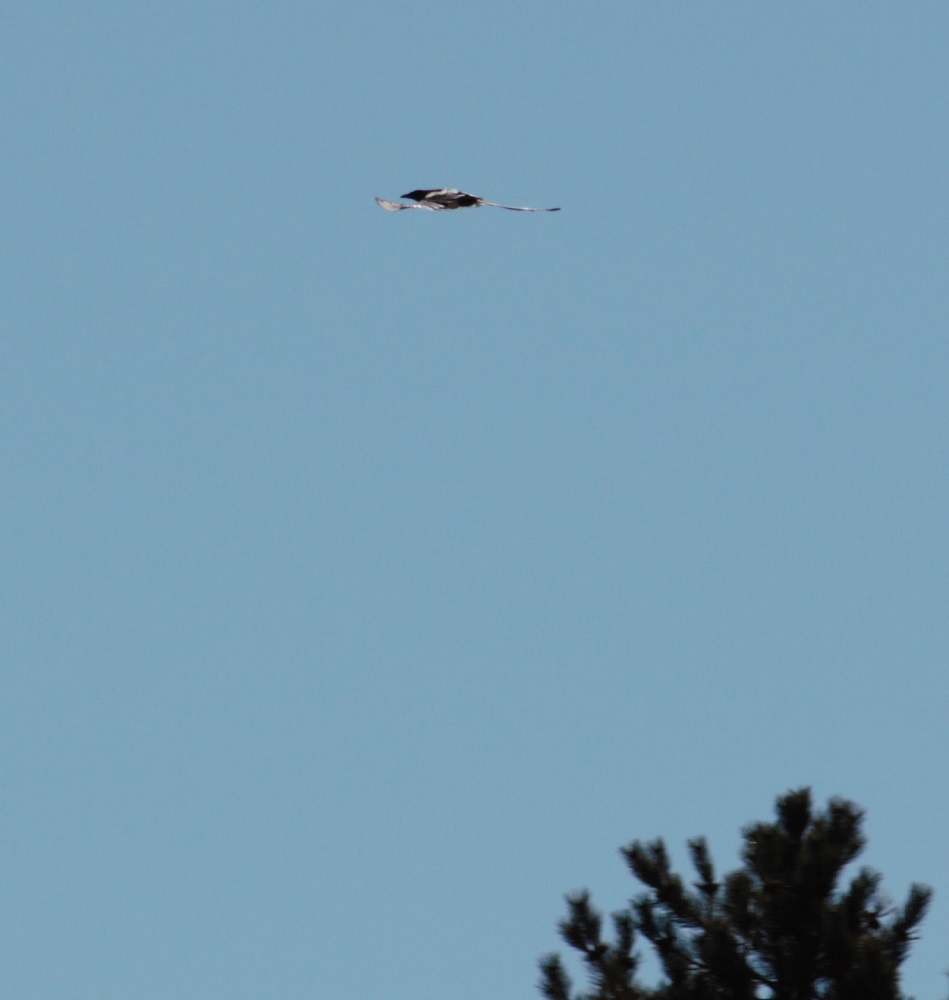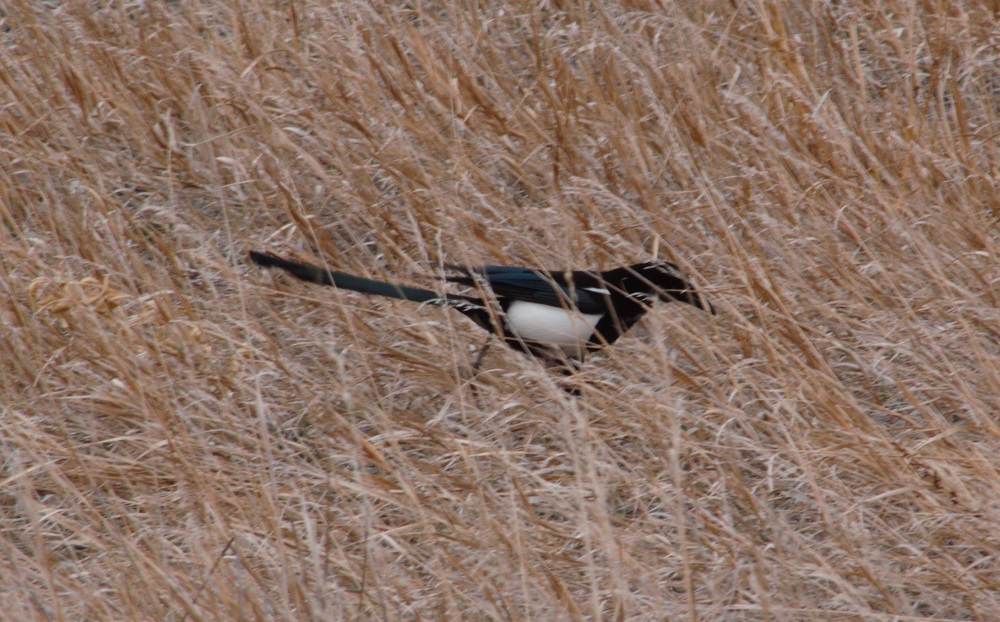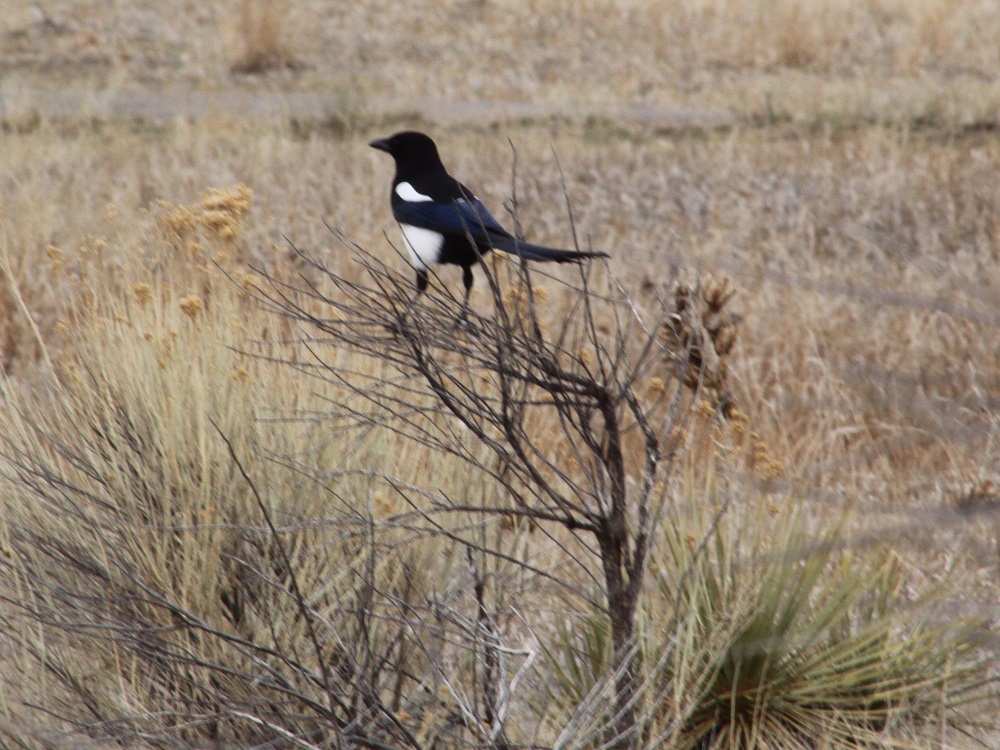If you see a large black bird with a long tail and flashes of white on the wings flying by, you have probably seen a Black-billed Magpie. Often, their harsh, chattering call announces their presence!
These birds are year-round residents of the Willow Spring Open Space and the neighborhoods around it. They are very distinctive with their black and white markings and their long blue-green tail.
Black-billed Magpies can be seen alone or in groups, and mostly forage on the ground for their food, which can include insects, seeds and carrion, along with eggs and the nestlings of other birds.

They are in the Passeriformes Order, or passerines, which includes perching birds and songbirds. Birds in this order have a toe structure that is well-adapted to perching by being 3 toes facing forward and 1 toe facing backwards on each foot.
How to Recognize a Black-billed Magpie
Black-billed Magpies are large birds, with a length (including their tails) of 18-23 inches and a wingspan of 22-24 inches.
Their heads, breast and top of their back are black, with a white belly and a long blue-green tail. The wings are metallic blue-green with a white patch that shows when they are flying.
As their name suggests, they have a black bill and black legs, feet, and claws.
They are in the Corvid family, which also include crows, ravens, and jays. Corvids have a reputation for being bold, clever, and adaptable.
The closest species is the Yellow-billed Magpie, but they only live in California.

Through the Seasons – mating, nesting
Black-billed Magpies live in flocks known as Parliaments, forming large roosts in the non-breeding season.
In the winter, they roost in coniferous trees with the branches acting as protection from predators and the wind.
In the spring, pairs build large nests, working on them for over a month. The males build a large dome to protect from predators such as Great Horned owls, ravens and crows. The females build the egg bowl, which is a mud cup lines with soft things such as hair, feathers, grasses and bark strips.
They begin nesting in April around here. The female lays about 6-9 eggs which are about 1 ¼” long. Incubation takes about 18 days, and the young birds leave the nest about 1 month after hatching, although they stay near the nest for another 3-4 weeks.

Where to find in Willow Spring Open Space
Black-billed Magpies like to live near waterways with brushy areas, so that makes the Willow Spring Open Space a prime spot for them.
They can be seen in lots of places: flying overhead, perching in flocks in trees for the night, in the tops of trees surveying their territory, on yucca flower stalks looking for their next meal, and on the ground rooting around for insects.
Did You Know?
The nests of Black-billed Magpies have a separate entrance and exit, to make it easy to go in and out with their long tail!
References and Further Reading
- Wild About Rocky Mountain Birds: A Youth’s Guide to the Rocky Mountain States, by Adele Porter, 2012
- Peterson First Guide to Birds of North America, by Roger Tory Peterson, 1986
- The Sibley Field Guide to Birds of Western North America: Second Edition, by David Allen Sibley, 2016
- National Geographic Field Guide to the Birds of North America: Seventh Edition, by Jon L. Dunn and Jonathan Alderfer, 2017
- Great Courses, The National Geographic Guide to Birding in North America, Course 7782, James Currie


